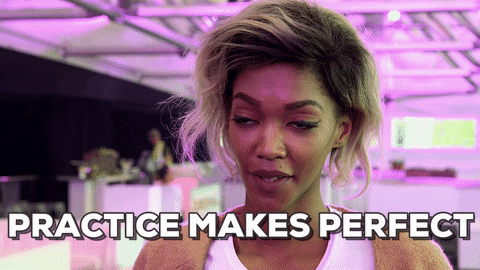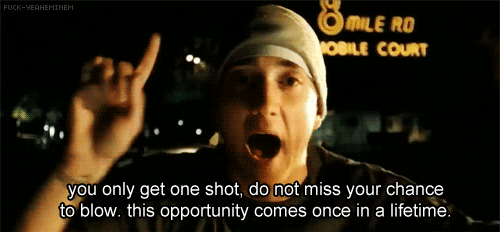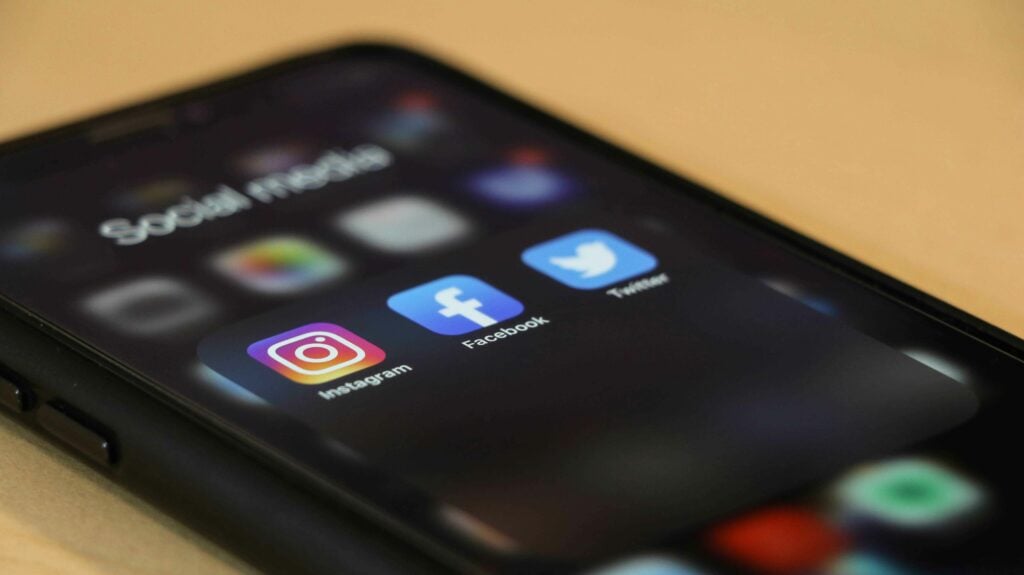A good demo can make or break a sales pitch. If your supplier gets it right, they’ll have you salivating for more, wanting to feel the benefits illustrated for real. If they get it wrong, you go home glad you never wasted your money.
Same product, two polar opposite reactions. It all depends on the sales pitch.
While the pitch in question might be out of your hands, convincing the rest of your stakeholders that you’ve struck gold is down to you. This article will look at the power of video calls and how recording them can speed up the process and get big stakeholders onboard quickly. But first, what is a product demo, and why is it important?

What is a Product Demo?
A product demo, or product demonstration, is a presentation where a salesperson demonstrates the utility and benefits of a product, usually to a prospective customer. It typically includes all the core features of the product as well as its capabilities and specific situations in which it might be useful. However, it’s important to note that it’s usually specifically tailored to a certain prospect.
The main reason for a product demo is to close a deal, and when done right, it works like a charm. It’s one of the most effective sales strategies you can implement during your sales pitches.
The Benefits of Recording a Supplier’s Product Demo
If you want to make a purchase from your supplier, you’re most likely going to need stakeholder support. If you’ve just watched the product demo of a lifetime, how do you convert that into persuasive words? How are you gonna convey the same energy and passion to other key decision makers?
Simply put, you won’t. But a recording can. In fact, a recording can convey the exact same emotions as your stakeholders will be watching the same thing as you. Did you know that 73% of U.S adults are more likely to purchase after watching a video that explains the product or service? You can use that to your advantage.

With tl;dv, you can also cut the fluff and make a clip of the product demo without needing to include the entirety of the meeting. This makes it easy on the eye and a super quick watch for stakeholders to give the go ahead. In fact, 69% of consumers say they prefer to learn more about a brand’s products or services via a short video.
But before we dive more into that, let’s look at the major benefits of recording a supplier’s product demo.
Documentation
By recording your supplier’s product demo, you get a permanent record of the features, capabilities, and functionalities of the product. You also get the little jiggle of nostalgia when you see your face light up in real-time, realizing how much this product is gonna change your work life. Or, if the product was utter crap, you get to at least laugh at your fake politeness.
In all seriousness, the documentation can be valuable for future reference, training, and can be forwarded on to stakeholders to make quicker decisions.
Training and Onboarding
For new employees or team members that need to learn about the product, what better place to send them than the original product demo. They’ll learn all about its main features and benefits. Some additions may need to be added as time goes by and new iterations emerge, but it’s a great way to start people off.
Even better, you can use tl;dv to make reels that mash separate video clips together so that the onboarding experience is even smoother.
Consistency
Recorded demos ensure that all viewers receive the same information in the same manner. This helps to maintain consistency in the messaging and reduces the risk of important details being missed or miscommunicated. This is vital to make sure everyone’s on the same page.
Remote Access
Wherever you are, and (at the risk of sounding mega trippy) whenever you are, the product demo will be available to you. Consider it the magic of the internet. This makes it easy to share the recorded demo with team members, stakeholders, or clients who may not have been able to attend the live demonstration (or who joined later and need to still learn about it).
This is especially useful in remote work scenarios or for asynchronous teams with members all over the globe.

Time Flexibility
Briefly mentioned above, time flexibility is worth emphasizing on its own. Not everybody has the time to attend live meetings. This is especially true in remote teams where workers can be in completely different time zones. Recording your product demos with tl;dv means that your team can reduce unnecessary time in meetings and catch up at their convenience.
Repeated Viewing
The really good product demos need to be watched twice. At least. With a recorded product demo you can watch that baby as many times as you please. This is particularly helpful if the product has some complex features that take a while to wrap your head around. It can help you understand its utility on a deeper level and allow you to revisit specific details for a more comprehensive overview.
Decision Making
As mentioned above, one of the key reasons why you’ll want to record your supplier’s product demo is so you can forward it to your stakeholders and make deals move forward at a faster pace. It allows stakeholders, managers, or purchasing teams to review the demo before making a decision that involves whether or not to invest in the product. But it also allows them to do it without sitting through the entire video call.
In fact, with tl;dv you can timestamp the product demo and send email links directly to important decision makers so they can jump to the exact moment where the demo starts. Simple, eh?

Evaluation
When you’re about to invest in a product, you want to make sure you’ve done your due diligence. With a recording in hand, you can have it reviewed by technical experts or quality assurance teams to evaluate the product’s compatibility with existing systems, potential issues, and integration challenges.
While the supplier will often help with this if you bring it up, it’s always wise to get it verified from your own end, too.
Feedback and Improvement
While this is more for suppliers, it’s still useful (and with tl;dv, they’ll automatically receive a free recording if you record the call). Suppliers can review the recorded demo to identify areas for improvement in their product presentation. It’s a good way to ensure steady growth and more effective demos in the future.
Record of Promises
A recorded demo can serve as evidence of the supplier’s claims and promises regarding the product’s features and capabilities. If it turns out that the product can’t do what they said it can, you’ve got indisputable evidence. Just make sure you get their permission before recording a call (this should go for all calls). The recording could come in handy in the case of disputes or misunderstandings.

Shareability
The great thing about having a recorded demo is you can share it easily. Whoever needs to see it can get a copy with ease.
The 5 Rules Laws of Good Product Demos
It’s all well and good recording your supplier’s product demo and using it to speed up the buying process, but what about if the product demo is bad? Well, for starters, your stakeholders don’t need to waste time in the original meeting and you can simply look elsewhere for the product you need. The recording doesn’t need to be rewatched if you know at the time it’s a definite no, and if they’re savvy, they’ll rewatch it themselves and improve for next time.
Saying that, there are 5 simple rules to follow when giving a good product demo. This is for suppliers trying to make the deal with clients, but also if you need to pitch the product to buyers of your own.
1. Customization is Key
Each and every customer is one of a kind. That’s why each and every product demo should be highly personalized and not just a generic pitch that you can take from one prospect to the next.
Before you do your product demonstration, do your research. Who are you pitching to? What do they need your product for? What’s their pain point or problem, and how can you portray your product as the solution to it?

Change the data and the contents to match your prospects: check their SEC filings, press releases, published interviews, annual reports, and more to understand who they are, what they represent, and why they need your product. Then show them how it works for them – with a dash of panache.
2. The Customer is King
Linked to the aforementioned point, the prospect needs to feel that this is about them. The product demo, while it demonstrates the product, should not just be a list of features and use cases. It should be about the customer. How will they use it, how will they benefit from it specifically? Why should they choose you over the competitor?
Get them in the visualization mindset. Meet them at their role and take them on a tour of the product from their perspective. How will they use it day-to-day? Rather than reciting a big long list of features, tell a story which places them in the seat of the user.
For example, “It’s Monday, and you’ve got a sales call coming up with Jenny. You notice that Jenny’s name sounds familiar. Your colleague has spoken with them before. Using your tl;dv library, you search the prospect and find the call recording. You can skim over the transcript, searching for keywords to see their opinions on important topics. You can also check out an AI generated summary of the call to get the gist of what was said. If you have enough time, you can even watch clips of the call, read notes made by your colleague or the AI, and even check any timestamps that your colleague left during the first call.
“Now, when you call Jenny, you can personalize the call to her and won’t have to waste her time by talking about things your colleague already covered before. You can impress her and boost her trust by showing her how up to date you are on Jenny’s needs, confirming what she wants before proceeding with the pitch. And all this without having to bother your colleague, too. Just like that, tl;dv places you one step closer to closing the deal.”
3. Practice Makes Perfect
You can’t just wing sales demos. It won’t work. It’s not like a PowerPoint presentation where you can just flick through some slides effortlessly. You need to focus on the demo itself, but also on the prospect and their reaction. Are your points hitting home hard enough? Do you need to switch up your style for certain points to be more effective? You need to keep your finger on the pulse of your prospect the entire way through.
The only way to achieve success with this consistently is through practice. As each product demo should be different from the last, practice is particularly potent. Keep going until you’re a master. You’ll be able to handle anything that comes your way.

4. Testing Prevents Embarrassment
If your demo flops because of a technical problem, you’re going to scare your prospect away. You only get one real shot with product demos. A failed one can leave a bad taste in the client’s mouth. If it doesn’t work, they’re going to be thinking your product is garbage or you’re unprepared and don’t care as much as you should. Quite possibly both.
Never assume everything will work fine on your first go. You don’t want to be on a live call when you realize the sh*t has hit the fan and your product isn’t functioning properly. As a simple comparison, it’s like testing your mic and camera before starting an important interview. If you go into a product demo and you haven’t tested the equipment, you’re asking for trouble.
Always have a plan B if something goes wrong, too. It doesn’t have to be anything crazy, but something to save the awkward silence while you try to figure out what’s wrong live on call will do. A simple sales-oriented activity can be a nice way to fill the gap.

5. Seal the Deal
You won’t get a better window to close a deal than after showing the prospect why it’s the right product for them. If the product demo went smoothly, this is the perfect time to take things to the next level. Make sure you ask something that moves the sale forward. This isn’t the time to be asking if they liked it or what they’d change about it, this is the time to ask if they’re ready to get stakeholders on board.
Without this, your prospect will end up subconsciously thinking that the product is a waste of space.
It’s a Date
The best way to remember the 5 rules is to think of them as a first date.

- Personalize your approach to your specific date. You aren’t going to get very far if you’re using cliche pick up lines or copying lines from the movies. Be natural, but be curious and interested in what your date (prospect) thinks.
- Why should they choose you over all the other possible dates in the world? This isn’t where you brag about all the money you have, or the places you’ve been, or how good you are in the bedroom. You have to show the date who you actually are and how you will be a good match for them. If you’re overcompensating, they’ll know you’re just wasting their time.
- Practice still makes perfect. A sweaty, nervous eighteen year old is not going to have the same experience as a charming and confident twenty-eight year old. While practicing dates is a little harder as it requires another person, you will gain experience over time. With product demos, you can get the practice done alone, and it won’t take ten years.
- The metaphor starts to run out of gas here unless you want to go overtly sexual. The point is you’ve got to be confident to show the prospect that you are the real deal, and more importantly, your product is too.
- Move things forward. Not asking a forward-moving question after the pitch is like not kissing under mistletoe after a long night of flirting. Momentum has been building up to this moment and if you let it slip at the very end, it’s going to start going in the opposite direction like a pendulum. Make the most of your windows of opportunity.
Record Your Calls with tl;dv
Download tl;dv for Google Meet or Zoom and get started recording your calls today. It’s super easy to set up and doesn’t cost a penny to get started with unlimited free recordings and transcripts. Check out the free and paid plans here.







